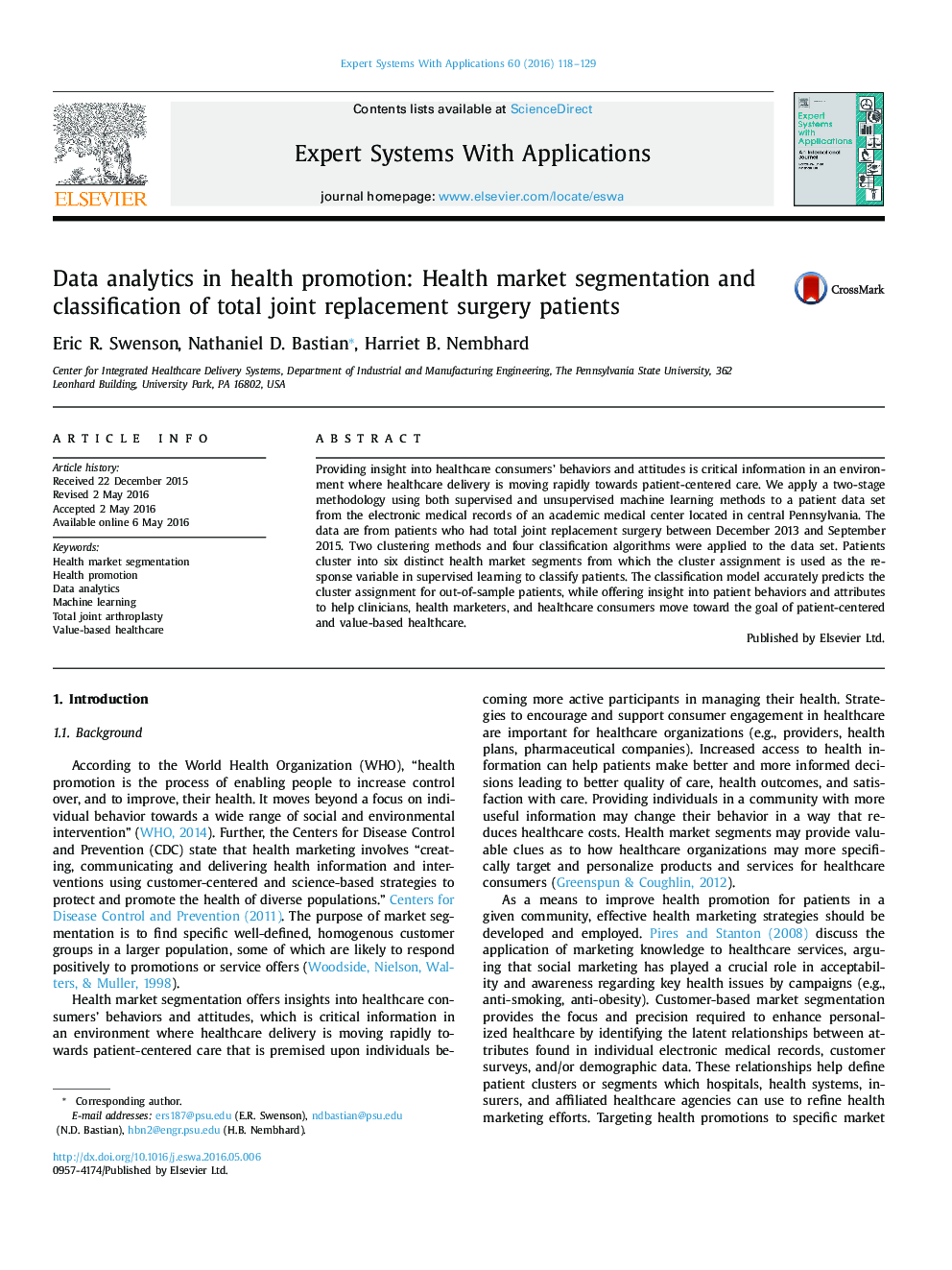| Article ID | Journal | Published Year | Pages | File Type |
|---|---|---|---|---|
| 383111 | Expert Systems with Applications | 2016 | 12 Pages |
•Healthcare delivery is moving rapidly towards customized, patient-centered care.•Machine learning is used to segment and classify total joint replacement surgery patients.•Classification models accurately predict the cluster assignment to new patients.•Results provide insight into patient behaviors and attributes to improve health promotion.•Helps clinicians, health marketers and patients move toward value-based healthcare.
Providing insight into healthcare consumers' behaviors and attitudes is critical information in an environment where healthcare delivery is moving rapidly towards patient-centered care. We apply a two-stage methodology using both supervised and unsupervised machine learning methods to a patient data set from the electronic medical records of an academic medical center located in central Pennsylvania. The data are from patients who had total joint replacement surgery between December 2013 and September 2015. Two clustering methods and four classification algorithms were applied to the data set. Patients cluster into six distinct health market segments from which the cluster assignment is used as the response variable in supervised learning to classify patients. The classification model accurately predicts the cluster assignment for out-of-sample patients, while offering insight into patient behaviors and attributes to help clinicians, health marketers, and healthcare consumers move toward the goal of patient-centered and value-based healthcare.
